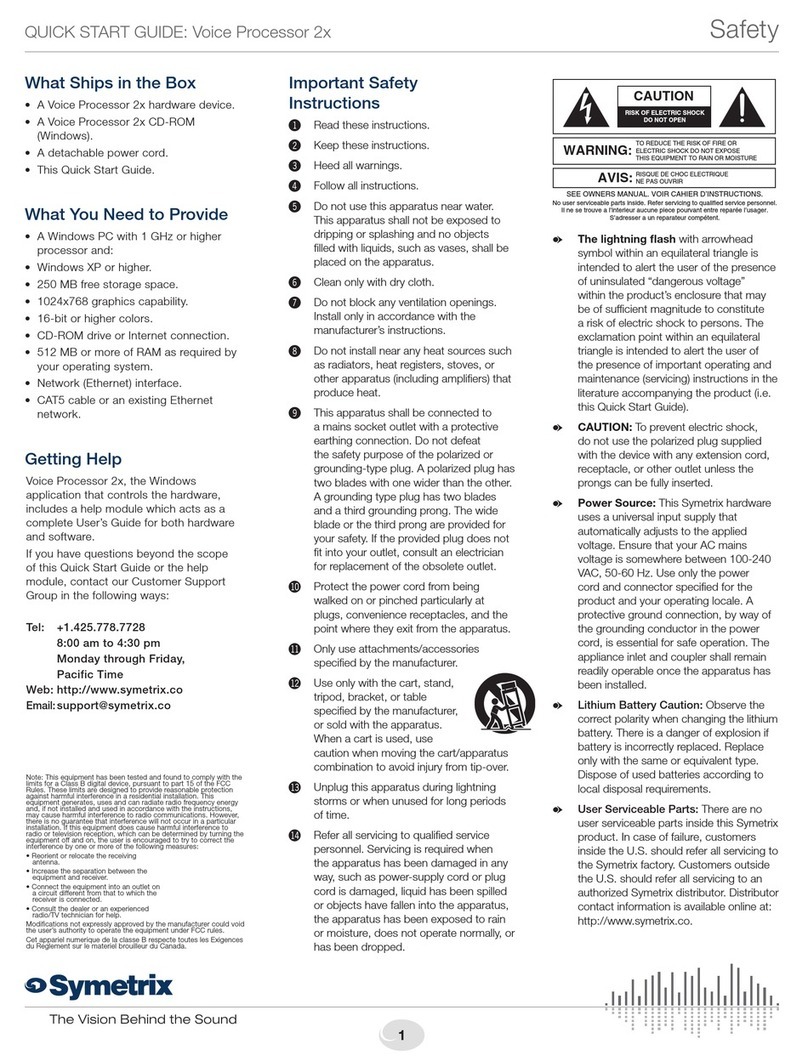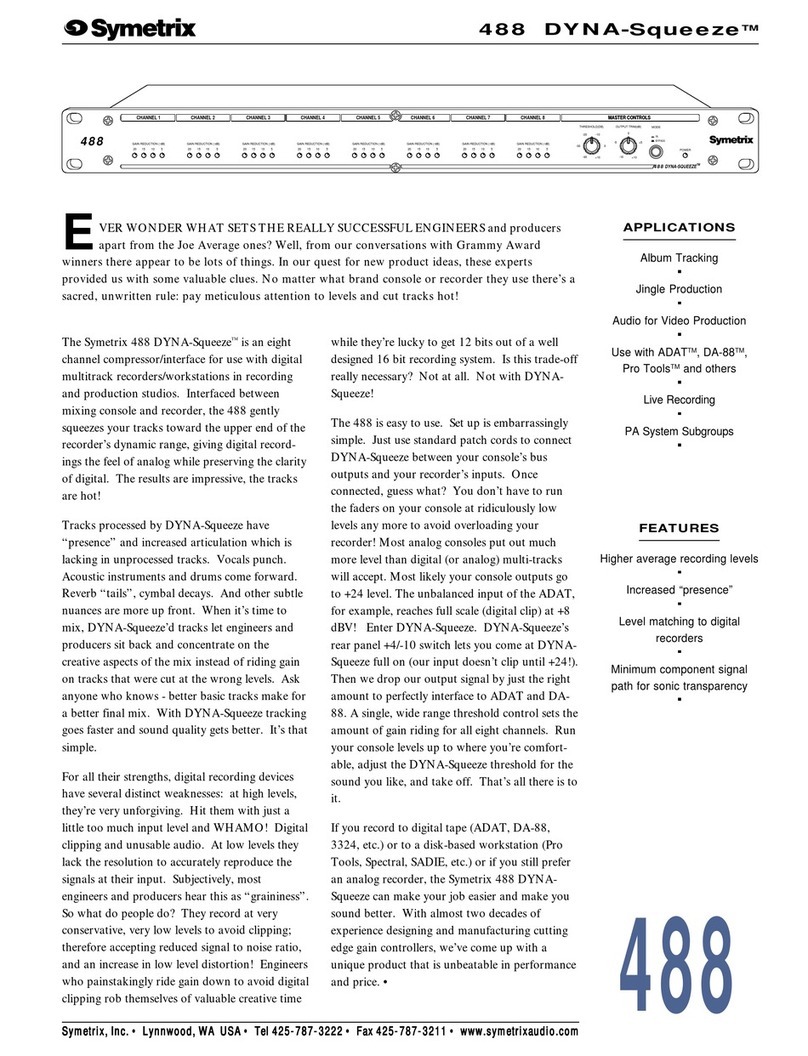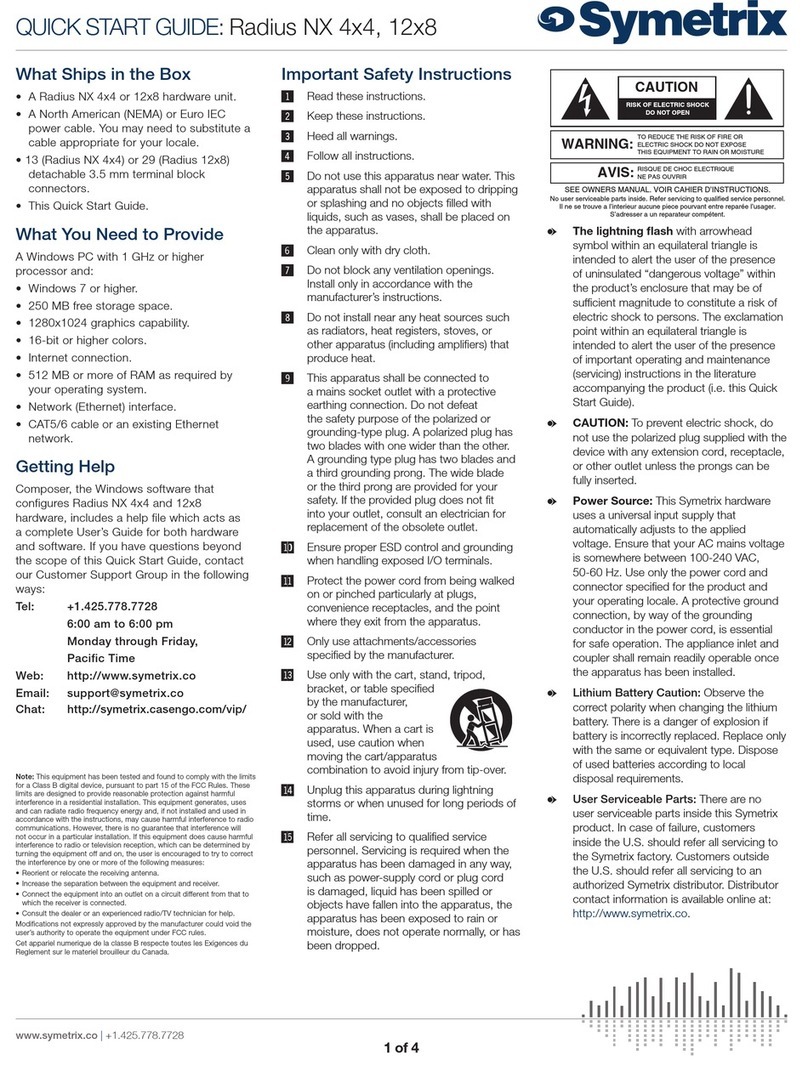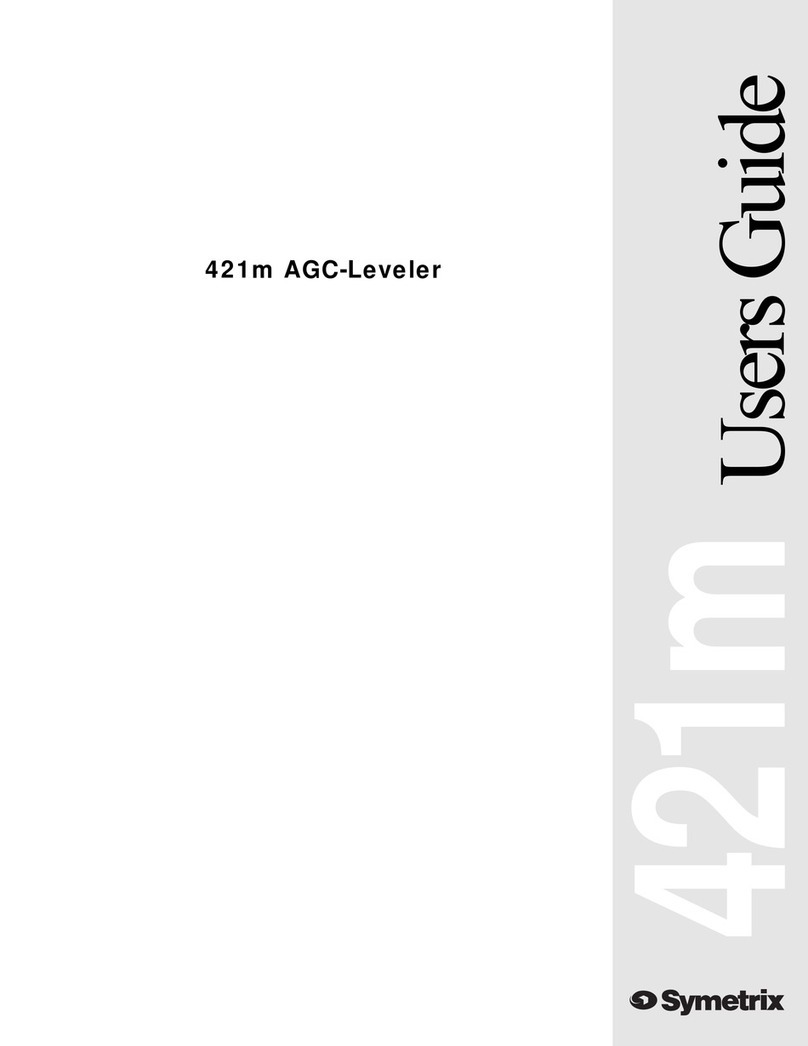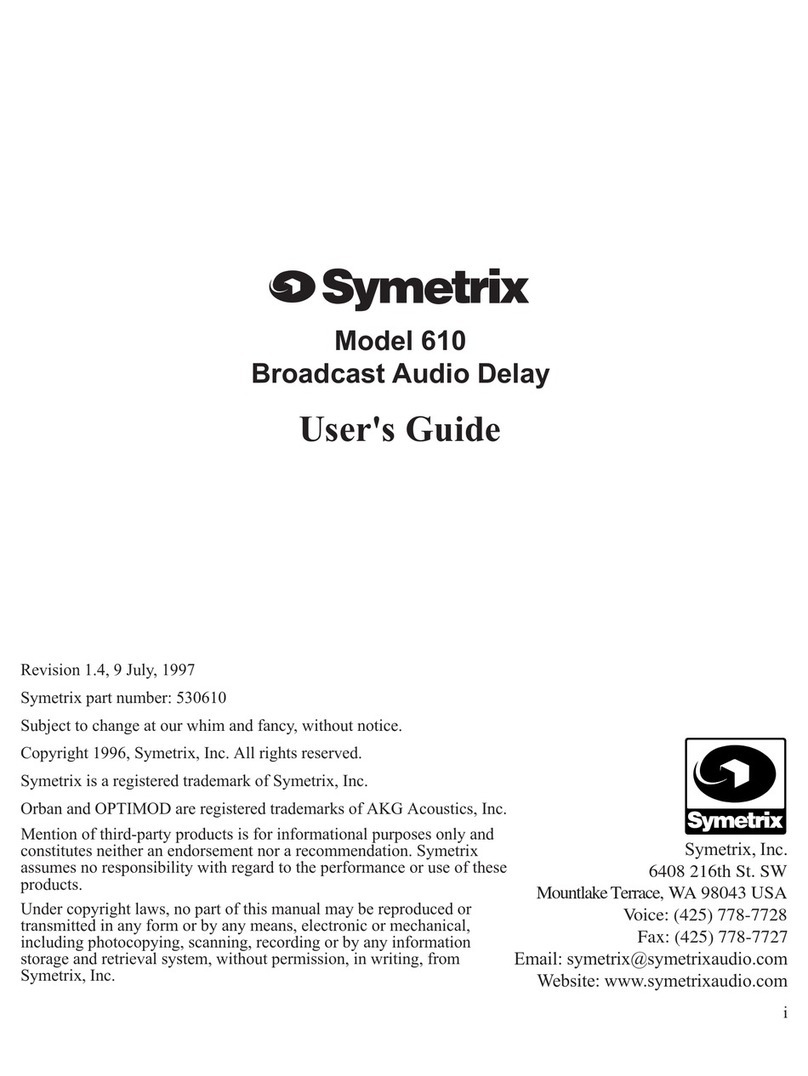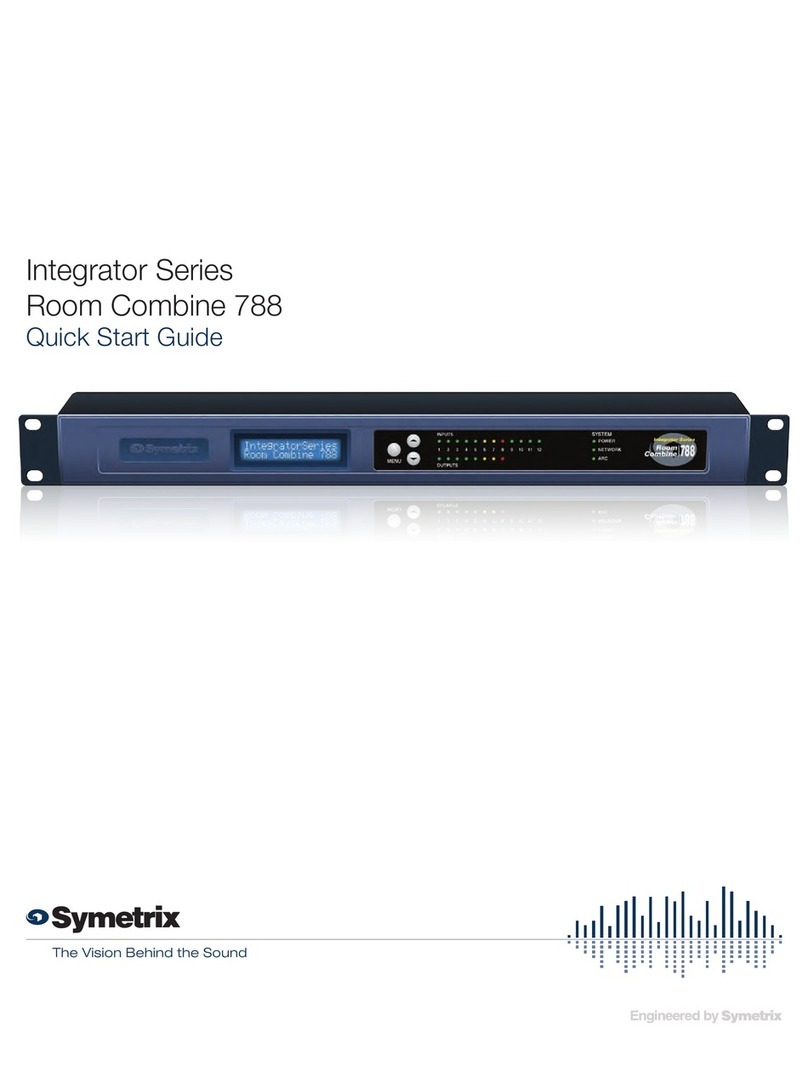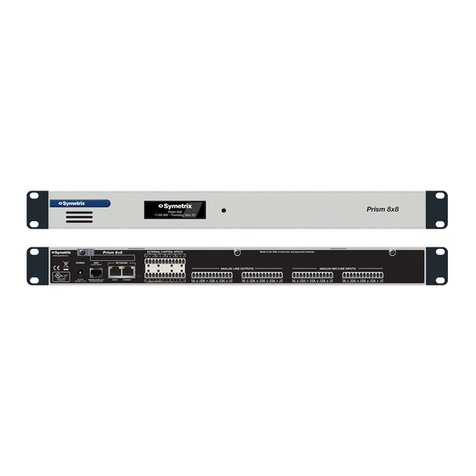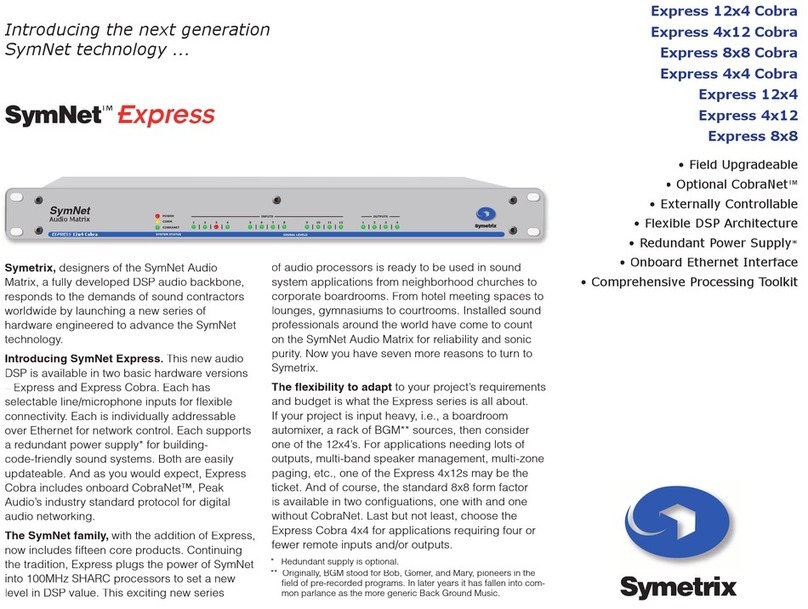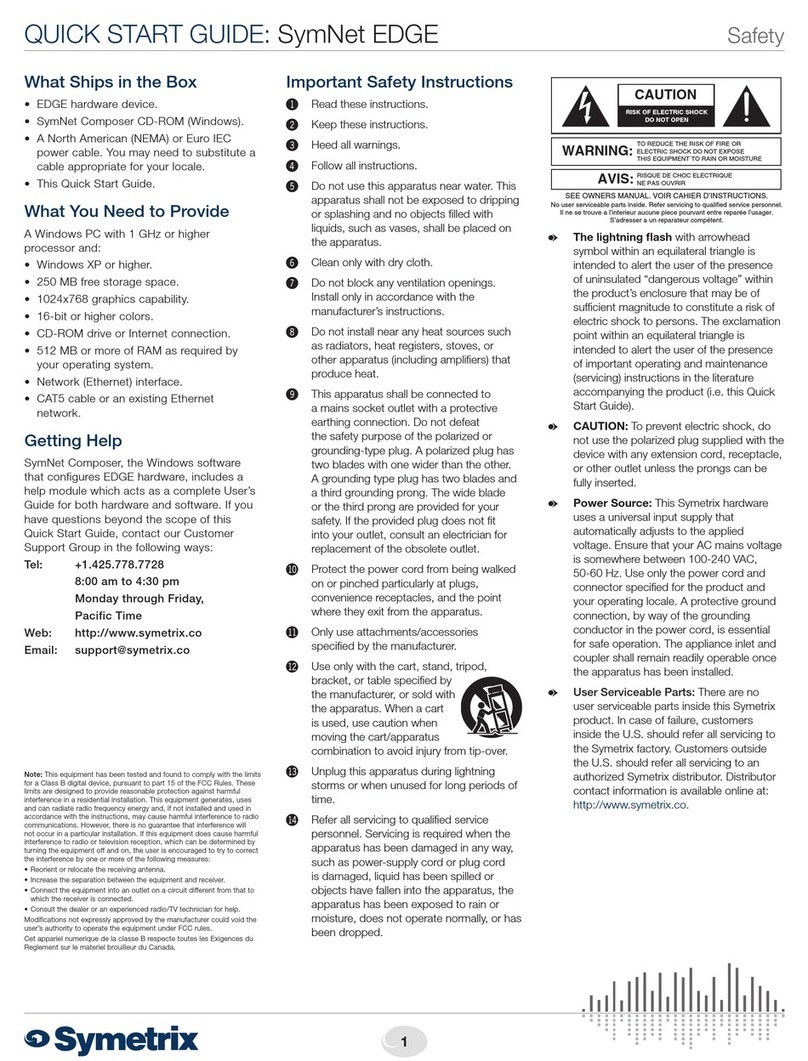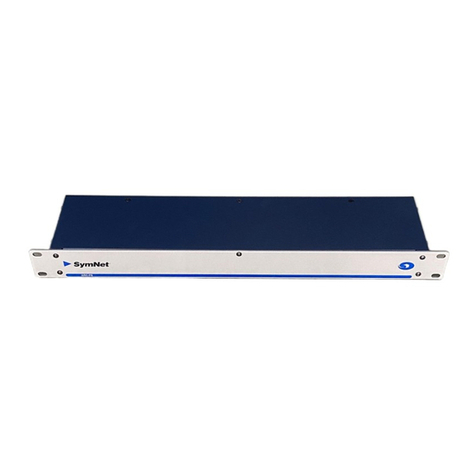real world signals often exceed the available
dynamic range of even the best equipment.
1.3
Threshold
1.4
Compression
&Limiting
The dynamic range of the best analog record-
ers Is around 70dB; still not quite enough
room for very wide dynamic range signals. In
order to keep the signals going to the recorder
well above its noise floor, and at the same time
not exceed It’s limit before distortion occurs,
signal processing Is sometimes neccessaiy to
"squeeze" the signal Into that slgnal-to-nolse
"window."
Often. In order to place high dynamic range
signals into acircuit ofnormal dynamic range
capability, acompressor or limiter Is used to
reduce signal dynamic range by setting an
upper limit on the signal peaks.
The threshold is the level at which adynamic
range processor’s activity begins. In opera-
tion, the dynamic range processor’s sensing
clcuitry constantly "looks at" the incoming
signal and compares It to areference level,
which Is called the threshold point. Compres-
sors and limiters respond when signals are
above threshold. The threshold point of the
SX208 Is internally set at -lOdB.
Compression and limiting are both derived
from the same signal processing famlty ofgain
reduction. The heart of this process Is based
on amplifier circuitry in which the gain Is
dependent on the signal level passing through
it. These ampUflers are knownasVGA's(Voltage
Controlled Ampllfler). By changing the gain,
based onsignal conditions, the dynamic range
of that signal can be automatically altered.
2
The amountofgainreductionIs determinedby
the RATIO control. The ratio is the number of
declbles ofchange in the Input level, compared
